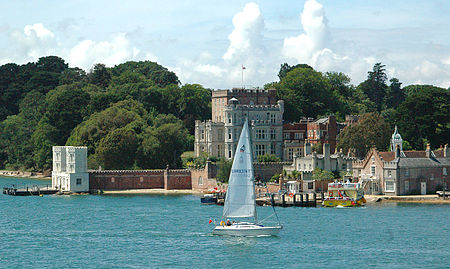Brownsea Island

Brownsea Island is the largest of the islands in Poole Harbour in the county of Dorset, England. The island is owned by the National Trust with the northern half managed by the Dorset Wildlife Trust. Much of the island is open to the public and includes areas of woodland and heath with a wide variety of wildlife, together with cliff top views across Poole Harbour and the Isle of Purbeck. The island was the location of an experimental camp in 1907 that led to the formation of the Scout movement the following year. Access is by public ferry or private boat; in 2017 the island received 133,340 visitors. The island's name probably comes from Anglo-Saxon Brūnoces īeg = "Brūnoc's island".
Excerpt from the Wikipedia article Brownsea Island (License: CC BY-SA 3.0, Authors, Images).Brownsea Island
Middle Street,
Geographical coordinates (GPS) Address Nearby Places Show on map
Geographical coordinates (GPS)
| Latitude | Longitude |
|---|---|
| N 50.691666666667 ° | E -1.9722222222222 ° |
Address
Middle Street
Middle Street
BH13 7EE , Studland
England, United Kingdom
Open on Google Maps










